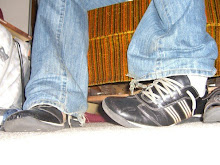In keeping with the democratic ideals of the Review (an opinion for every cat!), I present the following critique of the Review of Cats, sent in by Feline Rights Activist Joe Bartolotta:
It is no secret that humans set forth a group of hermeneutics in approaching how they classify cats. A “literal” approach, much like Mr. Dicks takes, seeks to observe the actions of the cat in an effort to understand the personality of the cat. There is a “moral” approach, through which a human utilizes observations of cats in an effort to gain some ethical understanding of life. Mark Twain does this when he says; “A man who carries a cat by the tail learns something he can learn in no other way.” There is an “allegorical” approach to cats, looking at how their constructions of communities can be related to human interactions. T.S. Eliot demonstrates this through his exemplary Old Possum’s Book of Cats. Finally, an “analogical” approach to cats seeks to understand cats as forbearers of the future. Classically, black cats have held this role, but the literary works of Haruki Murakami have expanded this vocation to most other shorthair cats. However, none of these breach an effort to understand cats for their unique ability to master themselves as individual beings.
My issue with Mr. Dicks’ review of cats rests in how I believe he interprets the quality of catness. His standards are set as though he expects our feline brethren to have been constructed through the imagination of Disney animators, rather than through a docile and diffident existence. His expectations that cats should “annoyingly bound onto my lap, then try to climb my shirt” and, “leap nimbly to my shoulders” in order to attain points seems to me to run contrary to the general ethos that I have observed in cats.
My first objection to Mr. Dicks’ reviewing method is that his criterion demonstrates an overwhelming bias. In the first place, this bias favors young cats and kittens. The acts of leaping “nimbly” and “bounding” are more difficult for the mature feline. Furthermore, the demand for the “moderately fluffy” cat demonstrates discrimination against longhair and hairless cats. Why should these cats even agree to be reviewed in the first place by such biased rubric?
My second objection pertains to the lack of emphasis on the substance of the character of the cat. Mr. Dicks contends that a cat must engage in a “volley of meows” in order to gain high marks. However, since Mr. Dicks has not demonstrated the ability to communicate with cats, he cannot place a value judgment on the substance of the meow. To put this in another context, it would be like one human speaking French to another human who cannot. While the human who cannot speak French may experience some pleasure on the sensory level, that person has no ability to tell whether the French speaker is sharing a grocery list or reciting the works of Honoré de Balzac. Clearly, the emphasis on how a cat appeals to human sensory experience complicates Mr. Dicks’ judgment of the substance of a cat’s mew.
However, the objection that makes me write this tome taps into something far more sinister; Mr. Dicks demonstrates that he intends to reinforce the subjugation of cats by humans.
Maybe Mr. Dicks was lucky enough to grow up surrounded by cats that sought his approval, and these cats shaped his interpretation of how a cat should or should not act. Indeed, his declaration, “that cat better impress me,” demonstrates his relationship with cats as one of power. He demonstrates hegemony—cats in a position deprived of power and humans dictating the rubric through which a cat may be qualitatively analyzed. Cats are hereby subjected to become nothing more that serfs—their identities not considered unique and their sense of place in limbo depending upon their ability to satiate the expectations set forth by another species.
It would be foolish to suggest that cats are not aware of the ways in which humans assert dominance over them. However, it is much more astute to observe that cats do not recognize human dominance. Put in another way, cats are content with the fact that humans believe they hold the dominant role in their relationships to cats, but cats themselves do not place much stock into it. As far as cats are concerned, humans can believe whatever they want—the mature cat, comfortable with his or her felinity, does not feel threatened by this relationship. Everything cats do is to avoid hassle.
Hard-hitting, clear-headed reviews of cats. Also, cat-related news.
Saturday, May 26, 2007
Subscribe to:
Post Comments (Atom)

2 comments:
Hisssssss...
I am on yer coments,
objekting ur revue
Post a Comment